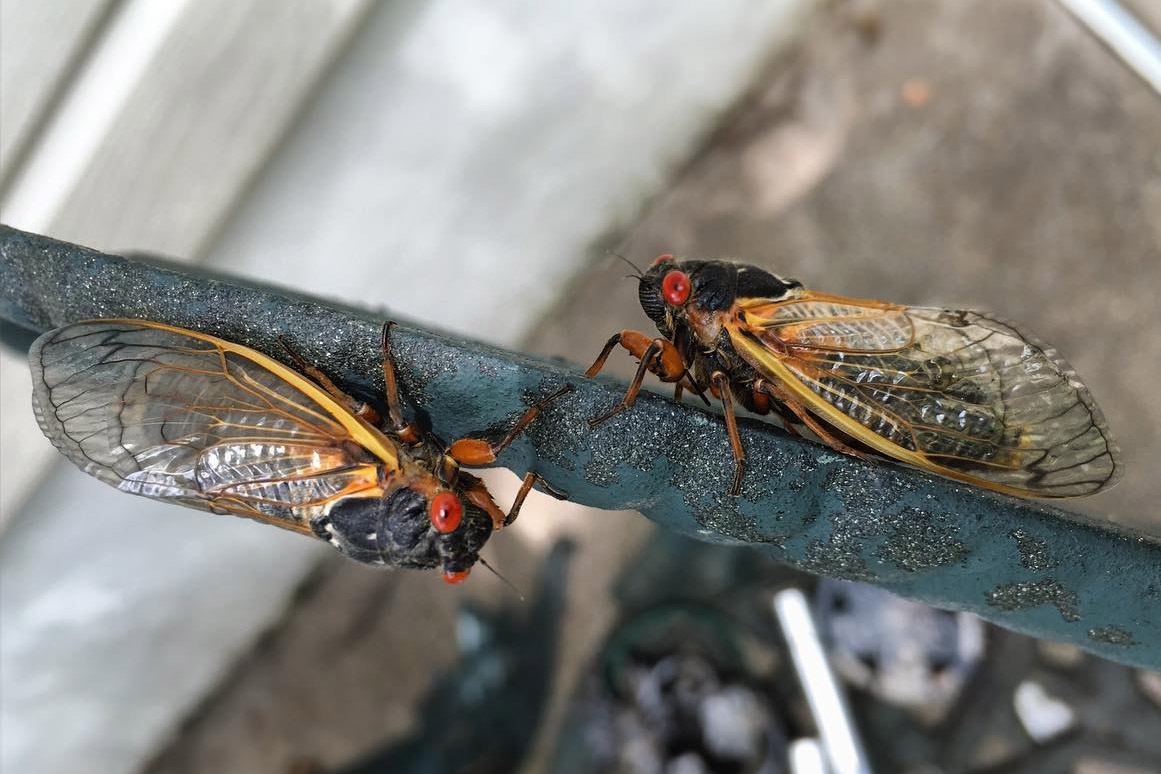After 17 Years, Cicadas Are Ready to Bust Out in Pennsylvania
They’re almost here. Actually, the insects are already here.
That’s if you count the immature cicada nymphs lurking just a foot below the ground, as they wait for just the right time to surface and mate. The insects about ready to make an appearance in southwestern Pennsylvania are known the ‘Brood V’ cicadas. And believe it or not, they’ve been hanging out in the ground for 17 years—feeding on tree roots and crawling up and down tunnels they’ve made in the dirt.
But how exactly do cicadas know when is the right time to emerge? Well, Kelly Hougland, a Ph.D. candidate at the University of Missouri has been studying whether cicadas could be using sounds and vibrations as cues to decide when to push up from the ground. He inserted little microphones called accelerometers into a small patch of woodland in Washington County to test this hypothesis.
LISTEN: “Your Environment Update for May 18, 2016”
Thus far, the emergence of cicadas has mostly been predicted by the warming temperature of the soil. But Hougland thinks there may be something social going on too because it’s so critical that the cicadas come out together.
“If a male comes out too late, all the females have been mated with,” Hougland says. “If they come out too early, there aren’t any cicadas around to be eaten instead of them.”
Hougland says cicadas are prime food for raccoons and lots of other animals. Emerging by the tens of thousands in this little research field—and by the billions in the region—ensures that some will go on to create the next generation.
Hougland says most of the cicadas are likely to start popping up within days. And in a week or so, their signature sound will be easier to hear—and hard to ignore.
Reporting by Kara Holsopple
Yes—You Can Use Goldfish to Raise Spinach
Until a couple weeks ago, the only species available for observation at Propel Andrew Street High School near Pittsburgh was the typical American teenager.
But on a recent Thursday, ninth-grader Jayden Scapellato was anxious to point out some new arrivals that are upping the school’s biodiversity profile.
“We have our tank on the bottom with a few fish,” she says, explaining the ins and outs of the school’s new aquaponics system—a kind of ‘aquaculture’ that uses fish waste to grow food. “And then we have a pump that pumps water through the top, which has pods of these rock thingies that have plants inside of them.”
Those “rock thingies” contain what will eventually be spinach, which grows in a tray above the tank. The plants feed on the goldfish waste being pumped up from a pair of PetCo’s finest cruising down below.
Quincy Kofi Swatson, executive director of The Door Campaign, the Pittsburgh nonprofit that created the pilot class, says the program is about making science more accessible.
“We use fish as a tool to engage our students in science, technology, engineering and math,” he says. “I want to enforce the idea that they are scientists—that they are intelligent. And that if they want to pursue a career in science, it’s not that far from them.”
The aquaponics project is in the first of a three-year pilot program, and Swatson says he hopes to bring it to more classrooms soon.
Reporting by Margaret J. Krauss

